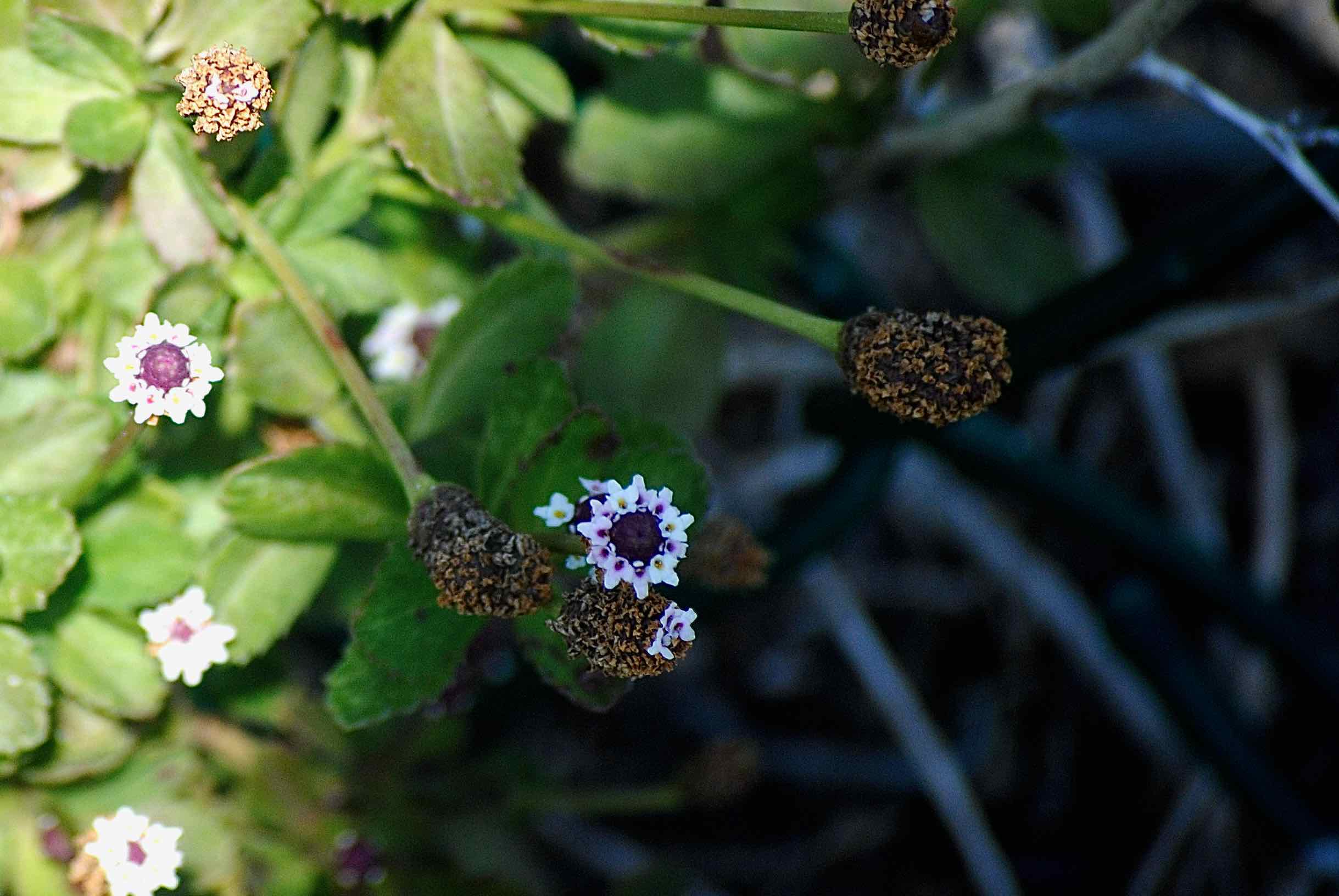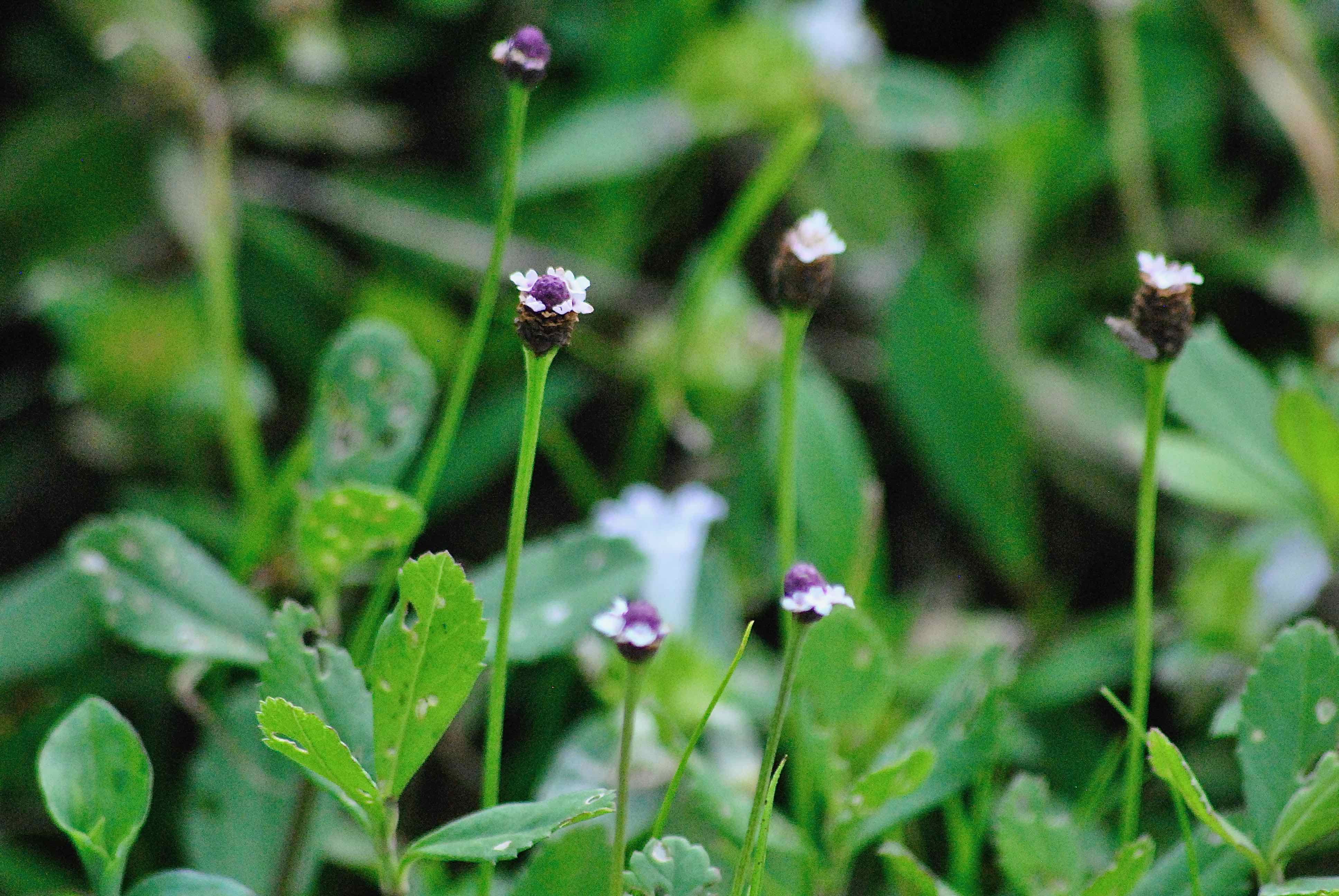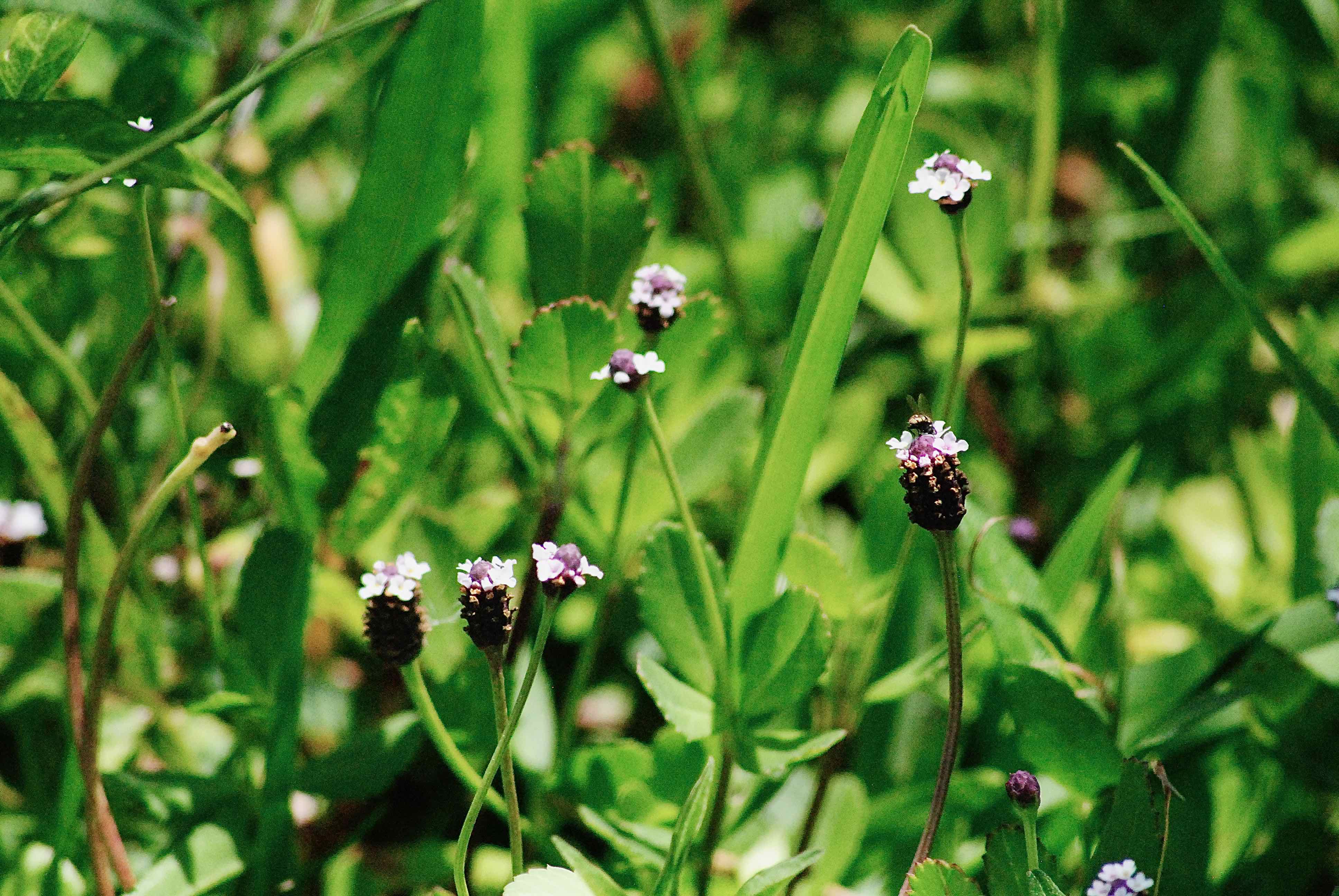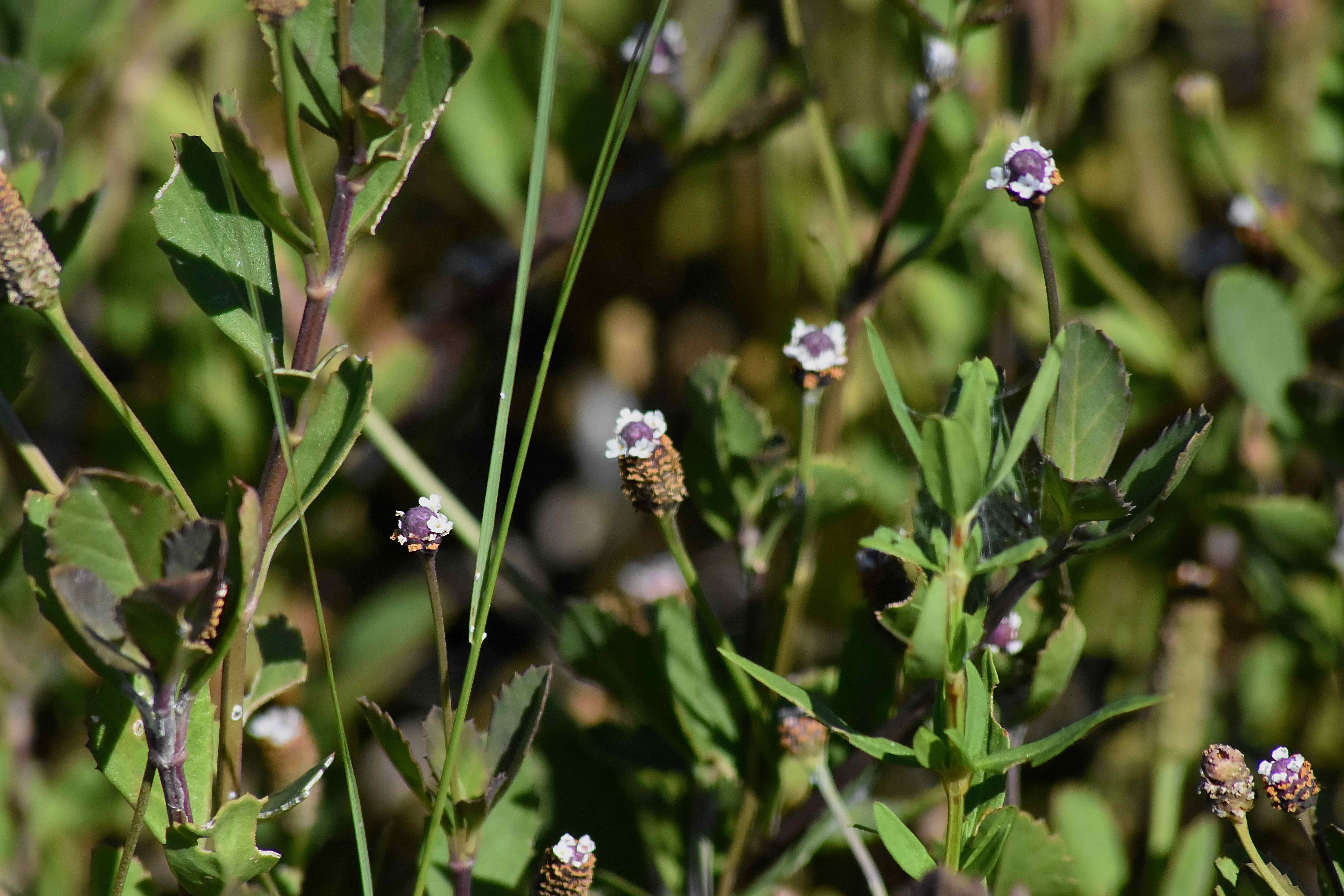
Turkey tangle fogfruit, photographed at Highlands Scrub Natural Area, Deerfield Beach, Broward County, in July 2016.
It can be called frogfruit or it can be called turkey tangle fogfruit. But it's not turkey tangle frogfruit. Why, we don't know. But whichever you choose, you're dealing with Phyla nodiflora. Got that? We're not sure that we do.
Turkey tangle fogfruit, as we've chosen, is a member of Verbenaceae, or the verbena family, which includes lantana. The resemblance of the flower to lantana is quite strong, not so much in our photos, but it is here. It normally tops out at three inches tall but reaches six when in bloom.
Frogfruit is a Florida native, found throughout almost all of the Sunshine State and a good chunk of the United States as far north as Pennsylvania and Oregon, south through Mexico, Central America, the Caribbean and into South America. It can be found in warmer climes around the globe. In fact, a list of the countries where it is native reads like the UN, Afghanistan to Zimbabwe. It is common pretty much throughout its range and generally well-behaved. It is not considered a pest anywhere.
Frogfruit is a rapid grower, and forms dense patches as it creeps along the ground. It is widely grown as a ground cover and sometimes used in hanging baskets. It has a cluster of white or pinkish flowers surrounding a purple or red "bract." The leaves are oval shaped, with teeth along the outer edges of the upper half. It grows in open, wet places, often along the margins of a swamp or stream, pond or lake. We've seen it growing in lawns and road sides. On the other hand, at the turn of the 20th century, fogfruit was touted as substitute for grass because it endured foot traffic and tolerated drought. It was even recommended for lawn tennis courts. More modern sources recommend it for low-traffic areas.
It is a host plant for common buckeye, white peacock and phaon crescent butterflies; many other butterflies feed on the flowers.
In the Philippines, where frogfruit is common, fresh leaves are used as a tea substitute. In India, the leaves are used to make a cough medicine. It's also used to treat gonorrhea and hook worm, liver disorders and dandruff. Yes, dandruff. And more. The plant is packed with medicinally valuable chemicals, including flavonoids, tannins, sterols and more.
The Houma tribe of Louisiana would use turkey tangle fogfruit to make a wash for babies too weak or lazy to walk. It has been used in various ways to treat fevers, colds, boils and wounds.
Some scientific research has found that frogfruit does have some important medicinal properties. One experiment found it has antibacterial properties, able to inhibit the growth of staph and E coli among others. Another, done in Pakistan, found it had promise against salmonella and MRSA, the super bug that's become the scourage of hospitals, nursing homes and dialysis centers.
One study done at a university in Taiwan, showed that frogfruit might have potential as a treatment for certain conditions involving the overproduction of the skin pigment, melanin.
Other common names include Texas fogfruit. sawtooth fogfruit, capeweed, daisy lawn, mat grass, hairy fogfruit, sawtooth, creeping vervain, matchsticks and matchweed. But the one question we can't seem to answer: why fogfruit or why frogfruit? That mystery endures . . .
Click on photo for larger image
U.S. Department of Agriculture Distribution Maps
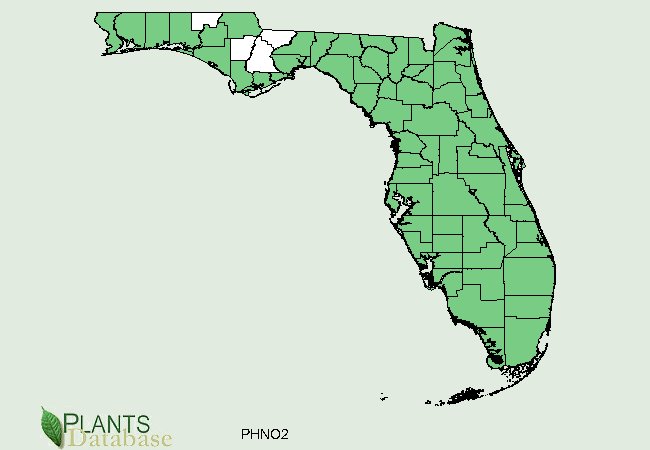

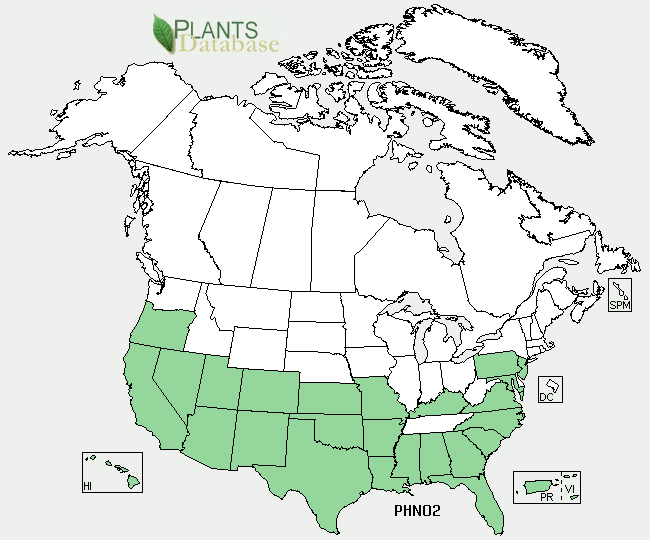
Links for Turkey Tangle Fogfruit

